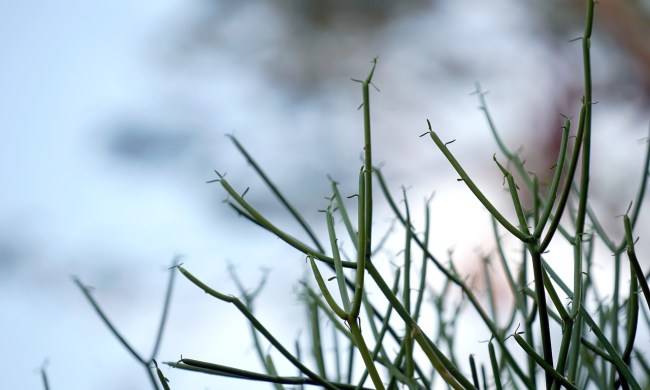Succulents are one of the most varied categories of plants, coming in so many different sizes, shapes, and colors. They’re known for being low-maintenance and drought tolerant, which makes them popular houseplants for beginners. One popular succulent is Kalanchoe daigremontiana, a type of kalanchoe also known as mother of thousands, alligator plant, and devil’s backbone. Want to grow this fascinating and lovely succulent? Here’s everything you need to know to keep it happy and healthy.
Planting mother of thousands

Choose a pot with drainage holes for your mother of thousands, and use well-draining potting soil. Like most succulents, mother of thousands is sensitive to overwatering. Using a cactus potting mix is a good idea, as these soil blends are formulated for increased drainage and airflow. This helps prevent root rot and other fungal infections, which can cause problems for this drought-tolerant plant.
Place your mother of thousands in bright, indirect light. If you must put it in direct light, opt for morning sun and afternoon shade, as more intense sunlight can burn its leaves. Ideally, your mother of thousands plant should receive 4 to 6 hours of sunlight per day. If you don’t have any suitable windows, consider supplementing with a grow light. While it can survive in shadier environments, providing plenty of light will ensure it thrives.
Mother of thousands care

Water your mother of thousands deeply, but not often. Every two to three weeks is ideal for keeping the soil moist enough for your mother of thousands plant to drink, but not so wet that it suffers. If the soil is still damp, wait for it to dry before watering it again. You should see water drain from the bottom of the pot when watering it. If there is no drainage, check the drainage holes to ensure they aren’t blocked. Avoid watering your mother of thousands plant during winter, when the plant is dormant.
Mother of thousands plants don’t typically need regular fertilizing, but they do appreciate it occasionally. If you notice your plant becoming pale and wilted, and the issue is not water or sunlight, then a dose of fertilizer may be in order. Any balanced fertilizer will work for your mother of thousands, but many gardeners prefer to use a liquid fertilizer and incorporate it into the watering routine.
Is mother of thousands invasive?

Mother of thousands, true to its name, can produce many pups. These pups will also grow quickly and begin producing pups of their own. This means that mother of thousands can spread rapidly, and it has done just that in some places. Certain places (such as Australia) have even outlawed importing mother of thousands due to how invasive it has become!
While more northern climates may be too cold for it to grow and spread effectively, you should take care if you live in USDA hardiness zones 9 through 11. The weather in these zones is warm enough to support mother of thousands, meaning they can spread and become invasive more easily. Keep your mother of thousands indoors and in a container to prevent it from spreading.
Is mother of thousands poisonous?

Mother of thousands is poisonous to animals and people. This is part of the reason it can become such a problem when it escapes containment. The plant can spread without natural predators to keep its population in check, and it can harm wildlife that come into contact with it.
All parts of mother of thousands are poisonous. Mild cases of poisoning can result in stomach problems, while more severe cases can cause heart issues as well. The sap is also a skin irritant, meaning it can cause a rash and itchiness if you touch it. Wear gloves when handling your mother of thousands, and keep it out of reach of any curious kids or pets. If you believe your child or pet has eaten mother of thousands, seek medical care immediately.
Now you’re prepared to add a mother of thousands plant to your collection. Whether this plant is just the beginning or the latest in a long line of plants, you’re sure to be delighted by this succulent. With proper care and a bit of patience, you can even propagate your mother of thousands to spread the joy to your friends or grow your own collection. Before you know it, you’ll have more mother of thousands than you know what to do with! Just remember to be cautious when handling it and keep it out of reach of pets and kids.




